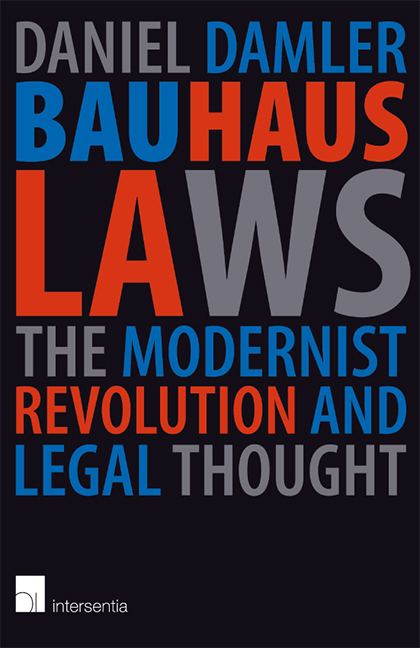Book contents
- Frontmatter
- Acknowledgements
- Contents
- Platonic Modernism: Introduction
- 1 Vienna 1900: Pure Legal Craftwork
- 2 Utopias Built with New Forms and Materials: Taut, Zamyatin, Le Corbusier
- 3 Hijacking Modernism: Bauhaus Values in the Third Reich
- 4 One-World Beauty: International Law and International Style
- 5 Regaining Sovereignty: “Transparency” in Postwar Germany
- Kandinsky's Laws: Epilogue
- About the Author
1 - Vienna 1900: Pure Legal Craftwork
Published online by Cambridge University Press: 15 November 2019
- Frontmatter
- Acknowledgements
- Contents
- Platonic Modernism: Introduction
- 1 Vienna 1900: Pure Legal Craftwork
- 2 Utopias Built with New Forms and Materials: Taut, Zamyatin, Le Corbusier
- 3 Hijacking Modernism: Bauhaus Values in the Third Reich
- 4 One-World Beauty: International Law and International Style
- 5 Regaining Sovereignty: “Transparency” in Postwar Germany
- Kandinsky's Laws: Epilogue
- About the Author
Summary
At first glance the life and work of Hans Kelsen seem an utterly inappropriate point of departure for proving that the classicmodern design catechism left its footprint on legal thought. And yet the case of Kelsen – guiding spirit of the “Pure Theory of Law” (Reine Rechtslehre) and one of the most influential legal theorists of the twentieth century – is eminently suited for studying how difficult it is to escape material culture's emotional, symbolic content and how tightly woven one's living environment and intellectual imprint can be.
The pithy leitmotif of Kelsen's oeuvre can be found at the start of his 1934 magnum opus – in the famous first section of the first chapter – a leitmotif he repeatedly returned to during his career in order to draw new strength: “It is called a ‘pure’ theory of law,” he writes,
because it only describes the law and attempts to eliminate from the object of his description everything that is not strictly law: Its aim is to free the science of law from alien elements. This is the methodological basis of the theory. Such an approach seems a matter of course. Yet, a glance upon the traditional science of law was it developed during the nineteenth and twentieth centuries clearly shows how far removed it is from the postulate of purity; uncritically the science of law has been mixed with elements of psychology, sociology, ethics, and political theory … The Pure Theory of Law undertakes to delimit the cognition of law against these disciplines, not because it ignores or denies the connection, but because it wishes to avoid the uncritical mixture of methodologically different disciplines (methodological syncretism).
Kelsen's aversion is to an epigonic and – in the worst sense – amateurish jurisprudence, one that is eclectic and syncretic in its approach, that is always borrowing from other disciplines and thereby losing sight of the proprium of jurisprudence and its methods. The aim of the Pure Theory of Law, in other words, is to help jurisprudence regain its former independence and dignity, which it squandered away by adopting the methods of psychology, sociology and other supposedly superior disciplines in order to bask in their glory.
- Type
- Chapter
- Information
- Bauhaus LawsThe Modernist Revolution and Legal Thought, pp. 15 - 36Publisher: IntersentiaPrint publication year: 2019



